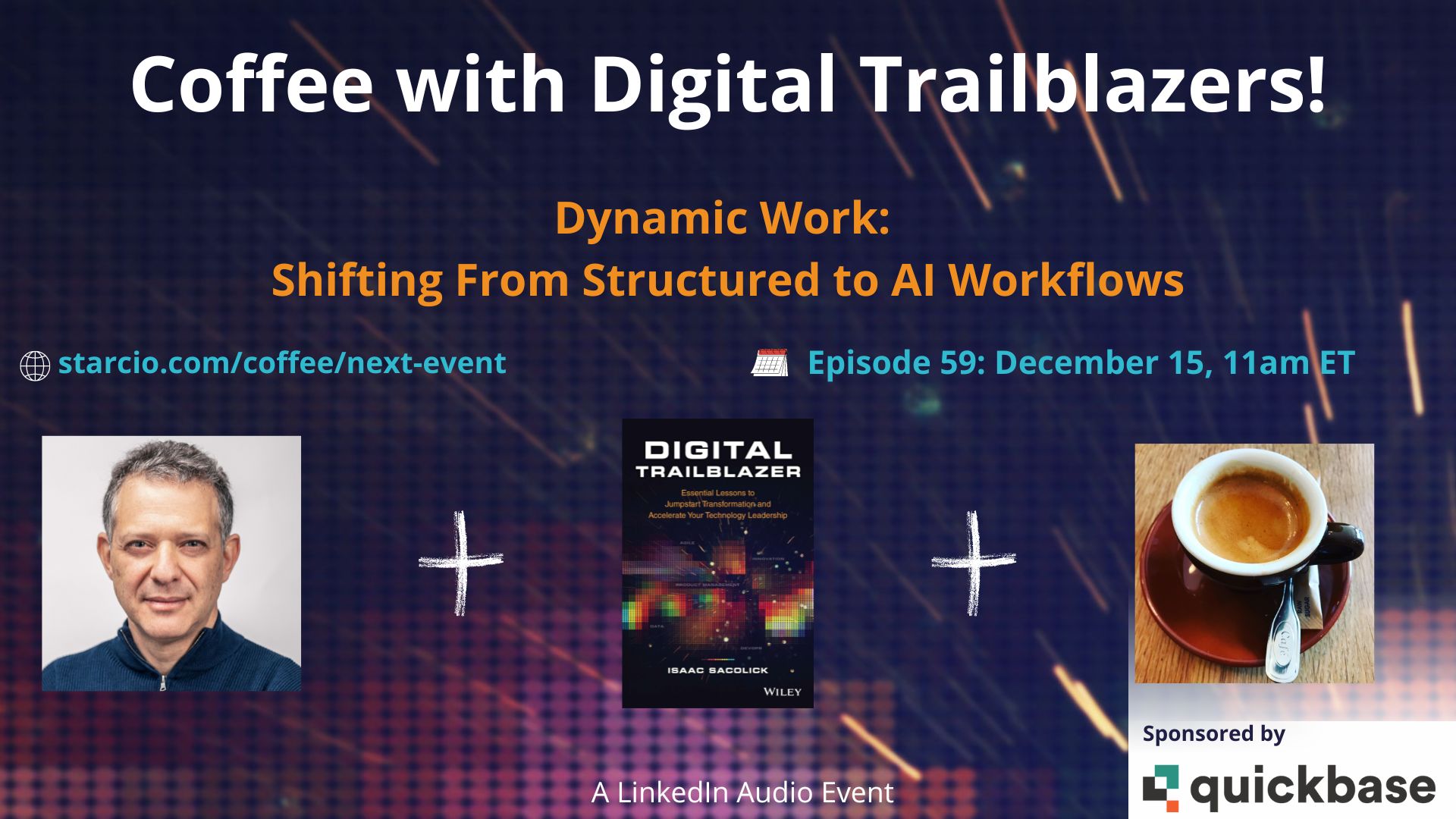Jamie knew she had plenty of work to do when she took the Director of IT role at a midsize HVAC services company.
Over the last decade, the company grew organically and expanded regionally by acquiring smaller service companies but had done very little to modernize its business operations. The business was largely running on a highly customized ERP, a basic CRM, spreadsheets, and emails, and she knew there was a significant opportunity to transform this gray work with automation and machine learning capabilities.
Gray work refers to
dysfunctional business operations backed by platforms that don’t integrate,
have dysfunctional user experiences, and contain poor data quality. When
tools don’t integrate, business managers must copy/paste or swivel chair
between screens to complete tasks requiring multiple platforms. When there’s
poor data quality and limited reporting capabilities, they export data to
spreadsheets, manually crunch numbers, and email outdated results to their
colleagues.
I know Digital Trailblazers like Jamie and have consulted with HVAC and
construction companies seeking to become
operationally resilient with dynamic work management. It’s a feasible transformation for many industrial companies, even with
small IT departments and limited budgets. They replace the gray work by
building
dynamic workflows with no-code platforms
and leverage built-in machine learning and
artificial intelligence capabilities
without hiring software developers and data scientists.
If I spoke to Jamie, I’d tell her about the recent
Forrester Total Economic Impact
study showing a 315% ROI and a 15% reduction in wasteful operational
spending by transitioning to dynamic work management with
no-code and citizen development.
ML-enabled dynamic work use cases
A key strategy for Digital Trailblazers looking to achieve significant ROI
is to seek
digital transformation force multipliers. Instead of investing in multiple SaaS tools to support small departmental
workflow challenges, IT establishes a center of excellence for citizen
development and uses a no-code platform for multiple business challenges.
Digital Trailblazers use no-code platforms to improve operational
efficiencies but also target revenue generation and growth opportunities.
They recognize that dynamic work lies at the intersection of peoples’
abilities to make smarter and faster decisions based on integrated workflows
and machine learning capabilities.
I’ll illustrate with two examples of how Jamie can accelerate digital
transformation.
Managing dynamic fleet scheduling and maintenance
A midsize HVAC company can easily have a fleet of over 100 vehicles that
require juggling daily work and fleet maintenance schedules. Optimizing
these schedules can be challenging, especially in regions where cooling is
needed during the 6-9 hot weather months and where a spike in service calls
occurs during heat waves.
Building a dynamic workflow requires connecting operational systems used to
schedule teams and equipment, asset management systems, and weather
forecasting data. In Jamie’s case, a CRM stores the customer service
request, and the ERP stores the fleet information, but two employees manage
the equipment scheduling and maintenance in different spreadsheets. These
tools don’t leverage weather information, and teams scramble to make changes
whenever there is an unexpected spike in service calls.
Here’s how Jamie and a
citizen developer
can build a dynamic workflow with machine learning to address this
challenge.
- An integration pipeline runs whenever the CRM captures data on a new or modified service call.
- A second pipeline connects to the ERP to capture adding or decommissioning vans and other equipment.
- A third pipeline pulls in updated weather forecasts every hour.
- The citizen developer creates one dynamic workflow to replace the crew and fleet scheduling spreadsheet. It leverages mapping to optimize routes and machine learning to predict the time required to complete a job by its type and sizing metrics.
- A second dynamic workflow schedules van maintenance and uses machine learning to forecast optimal times when demand is low and weather-related spikes are not in the forecast.
- The IT team provides access to the workflows and information through a mobile application tailored to each department’s needs.
- This dynamic workflow improves customer satisfaction when crews arrive at jobs on time, optimizes how the company uses its fleet during peak periods, and ensures maintenance is performed with minimal operational impacts.
Creating workflows for marketing events
Transforming gray work to dynamic work doesn’t just apply to operational
workflows. Many front-office functions, especially in marketing, provide the
opportunity to streamline processes and enable data-driven results.
Jamie’s organization has a CRM, but the tool only supports sales and
customer service workflows. The platform has limited marketing capabilities,
leaving this team to manage its workflows and data with a hodgepodge of SaaS
tools and manual data integration steps.
Jaimie discovers that the primary marketing activity centers around
events, including events that the marketing department hosts for prospects and
commercial events where they collect leads at the company’s booths. Over a
typical three-month period, the marketing department hosts eight events,
connects with hundreds of prospects, and has one gargantuan spreadsheet
capturing all this data. There is a manual push to get the data into the CRM,
and one consultant does this step manually about once a week. Marketing wants
better tools to forecast which events to attend, who to invite, and how to
create a closed-loop connection with the CRM.
A citizen developer addresses this gap by creating a no-code events
management application. He loads data from the spreadsheet into two tables,
one for the events and one containing prospects who attended them. Instead
of one person managing the data, the whole events team gets access and
spends time adding more event and attendee dimensions. The citizen developer
then adds a third table to track follow-up activities and configure the
platform’s
data analyzer
to score prospects.
When a marketing manager adds new prospects after an event, machine learning
predicts how likely each prospect will convert into a sales opportunity. The
event’s marketer pushes the hottest prospects directly to the CRM’s sales
funnel through a pipeline, and they optimize invites to future events based
on the ML model’s predictions.
How all businesses, from SMBs to large enterprises, transform gray work
From these two examples, I hope you see how organizations of all sizes and
across industries can accelerate their digital transformation with dynamic
work management and an ML-enabled no-code development platform. The key to
success starts by identifying the organization’s gray work, establishing
citizen development capabilities, and building ML predictions into dynamic
workflows.
This post is brought to you by Quickbase.
The views and opinions expressed herein are those of the author and do
not necessarily represent the views and opinions of Quickbase.


No comments:
Post a Comment
Comments on this blog are moderated and we do not accept comments that have links to other websites.